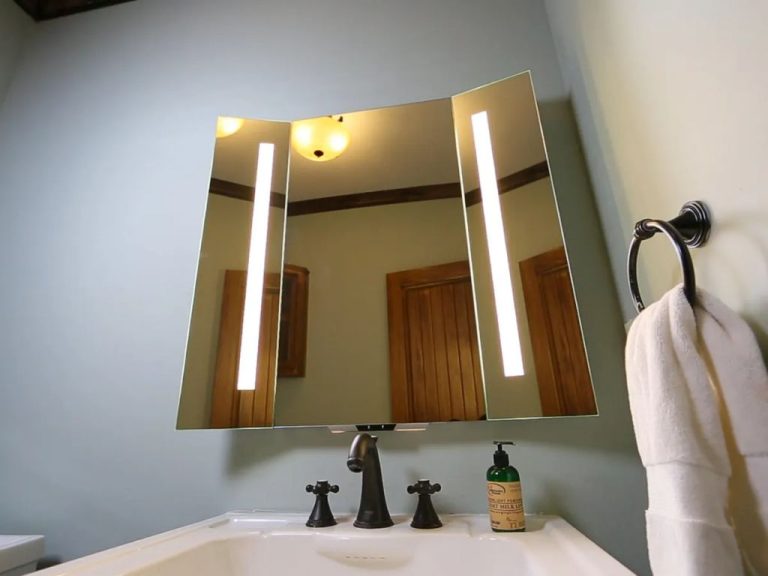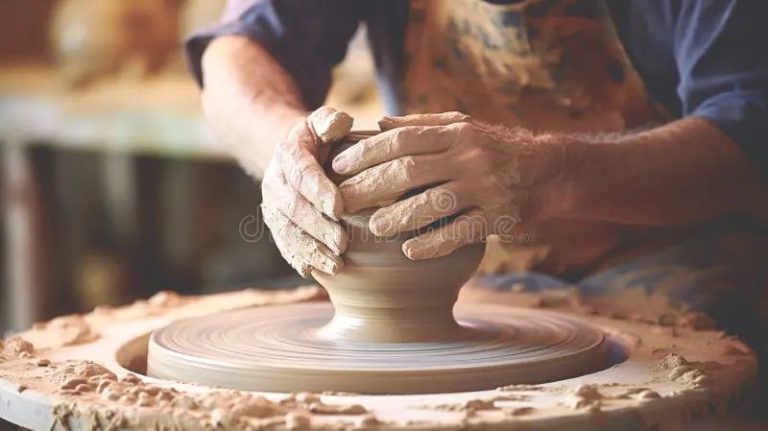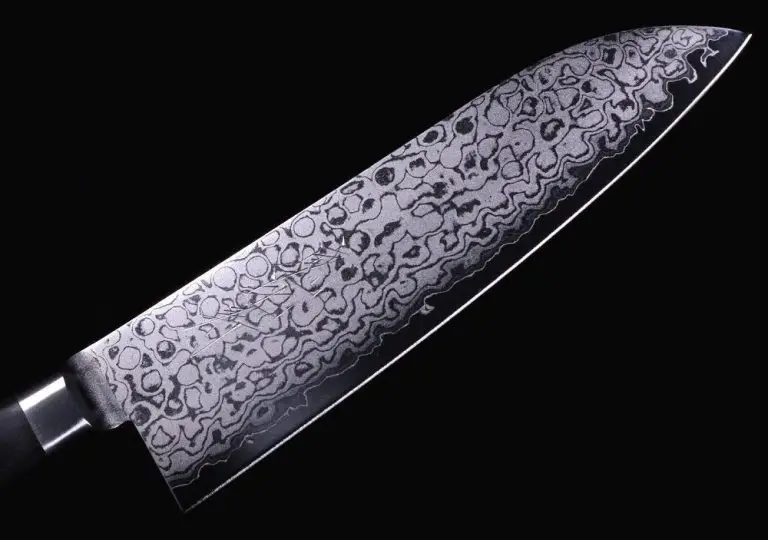What Is The Use Of Sugar Clay?
Sugar clay, also known as cold porcelain, is a dough-like modeling material made primarily from cornstarch, glue and other ingredients like baby oil or lemon juice. It is a popular material for crafters and cake decorators to hand mold decorative elements like flowers, figurines and more.
What is Sugar Clay?
Sugar clay, also sometimes referred to as cold porcelain, is a lightweight, non-toxic modeling material that dries hard and can be sanded, shaped, drilled, and painted upon drying. The main ingredients in sugar clay are cornstarch, glue, and cold water. Additional ingredients like lemon juice, vinegar, or baby oil may be added as well. The cornstarch provides structure as it hardens, while the glue acts as a binder. The clay remains flexible and workable at room temperature, then dries hard and can be painted, sanded, and finished.
There are a few main types of sugar clay:
- Basic homemade sugar clay using cornstarch, glue, and cold water.
- Premade commercial sugar clay products with additional ingredients added for smoothness and workability.
- Thin sheets of sugar clay called flower paste that are ideal for delicate floral pieces.
The modeling properties and non-toxic nature of sugar clay make it popular for cake decorating, homemade ornaments, jewelry, and more. Once dried, sugar clay creations are durable yet lightweight.
Origins and History
Sugar clay first emerged in the 1990s as an alternative to fondant for cake decorating and modeling. It was developed to provide a pliable, sweet material that holds its shape better than conventional frosting or fondant. The first mass-produced sugar clay products appeared in the late 1990s under brand names like CakePlay and Fimo. These allowed home bakers and cake decorators access to modeling materials that had previously only been available to professionals.
The original sugar clay formulas were made mostly from powdered sugar and liquid glucose or corn syrup. They revolutionized cake decorating by being much easier to handle and shape than fondant alone. However, the early sugar clay products had some drawbacks, like becoming sticky or melting if not properly stored.
Over the 2000s and 2010s, sugar clay products continued to improve through innovations in ingredients and production methods. New versions were developed to be smoother, hold color better, and withstand heat and humidity. Additional colors, flavors, modeling tools, and accessories were also launched to expand sugar clay’s creative possibilities. The growth of television cake competitions in the 2000s helped boost public interest and awareness of sugar clay as well.
Today, sugar clay remains a popular alternative to fondant for decorating cakes as well as for candy making and other crafts. Both mass-produced and homemade versions provide modeling capabilities not possible with frosting alone. Sugar clay enables bakers to create detailed designs, figures, flowers, and more on cakes and sweet treats.
Uses and Applications
Sugar clay is incredibly versatile and can be used for a wide variety of modeling, sculpting, crafting and decorating applications. Here are some of the most popular uses of sugar clay:
Modeling, Sculpting and Crafting
Sugar clay is an excellent medium for free-form modeling and sculpting. It can be shaped and molded by hand into detailed sculptures, figurines, decorative objects, jewelry, beads, buttons, and more. Sugar clay holds fine detail well, allowing crafters to create intricate designs. It air dries rock hard, so finished sugar clay pieces are durable. The lightweight nature of sugar clay makes it easy to work with for extended periods.
Cake Decorating
Sugar clay is commonly used to decorate cakes, cupcakes, and other baked goods. It can be rolled flat and cut into shapes or textured with imprint molds. Sugar clay embellishments add flair to cakes with 3D flowers, fruits, animals, characters, textures, and accents. Sugar clay sticks well to frosting and fondant, yet releases easily from non-stick surfaces. Decorators appreciate how sugar clay doesn’t melt or wilt under cake lights.
Making Molds
In addition to hand-sculpting, sugar clay can be cast into silicone molds to achieve consistent, detailed forms. Molds allow for mass production of sugar clay pieces for cake decorating, favors, jewelry, ornaments, magnets, and more. Smooth plastic molds work better than rubber molds for cleanly releasing intricate sugar clay pieces. Let molded pieces air dry completely before gently flexing the mold to pop them out.
Working with Sugar Clay
Working with sugar clay requires some specialty tools and techniques to make sure your clay is smooth, pliable, and ready for decorating. Here are some tips for working with and preparing sugar clay:
Tools Needed
Having the right tools makes working with sugar clay much easier. Essential tools include:
- Rolling pin – For rolling out clay to an even thickness
- Smooth work surface – Nonstick mats or acrylic sheets work best
- Clay sculpting tools – For shaping, smoothing edges, adding texture
- Cutters – For cutting out shapes
- Paint brushes – For brushing on colors, dusts, lusters
Rolling, Conditioning and Softening
Properly preparing your sugar clay ensures it is smooth and pliable for decorating. Here are some techniques:
- Knead – Using your hands, knead the clay to warm it up and make it pliable
- Roll – Use a rolling pin to roll the clay into an even sheet or thickness
- Smooth – Use a clay scraper or silicone tool to smooth over cracks and lines
- Soften – If clay is dry or crumbly, add a few drops of water and knead to soften it up
Baking Instructions
Sugar clay must be baked to set it. Follow these tips:
- Bake at 225-250°F for 10-15 minutes until firm
- Let cool completely before handling
- Use cornstarch or baking powder to prevent sticking
- Support pieces with foil or wax paper while baking
Sugar Clay vs Fondant
Sugar clay and fondant are two popular ingredients used to decorate cakes, cupcakes, cookies and other baked goods. While they share some similarities, there are some key differences between the two.
The main ingredients in sugar clay are sugar, cornstarch and cream of tartar. It has a smooth, pliable texture similar to modeling clay. Fondant on the other hand contains sugar, gelatin, glycerine and glucose. It has a thicker, denser consistency.
Sugar clay is easier to work with and shape into details. It doesn’t dry out or become sticky like fondant can. Sugar clay holds its shape better and doesn’t crack when bending. The texture is also smoother and more malleable. Fondant can become stiff and needs to be kneaded frequently.
One advantage of fondant is that it can provide a flawless, smooth surface on a cake. Sugar clay may show cracks or imperfections. However, sugar clay has better flavor and is often preferred for taste, especially for decorations that will be eaten. Fondant has a distinct sugary flavor that some find too sweet.
Sugar clay is ideal for modeling detailed shapes like flowers or figurines that need to hold their form. Fondant works well for covering cakes or making basic shapes. Sugar clay dries solid so decorations will be durable. Fondant stays pliable, so decorations may sag or change in humid conditions.
When choosing between sugar clay and fondant, consider the project and desired results. Sugar clay excels when flexibility, intricate shaping and great flavor are needed. Fondant provides a perfect cake coating with a smooth surface. With their different strengths, both offer useful tools for any decorator.
Sugar Clay Brands
There are several major brands of sugar clay that are popular for baking, decorating, and crafting projects. Some of the top brands include Cake Craft, Wilton, and Makin’s Clay. Each brand has its own unique properties that can affect the end result.
Cake Craft produces a wide variety of sugar clay products including modeling clay, texture tools, cutters, and more. Their sugar clay comes in standard colors like white, brown, and black, as well as trendy options like mermaid and galaxy colors. Cake Craft clay has a smooth, silky texture that makes rolling and shaping easy. It also firms up nicely to hold shapes and impressions well. The clay is non-toxic and provides vivid colors.
Wilton is another top brand amongst bakers and cake decorators. Their sugar clay is easy to shape and mold into detailed designs. It bakes into a hard structure that won’t collapse or droop. Wilton’s modeling clay comes in an array of colors and can be mixed to create custom shades. The texture is flexible and smooth. One downside is that it tends to dry out faster than other brands when exposed to air.
Makin’s Clay is a professional grade clay that is ultra-smooth and pliable, making it perfect for detailed cake toppers and figurines. It retains moisture well compared to other brands. Makin’s Clay provides vivid colors that don’t fade or smear when baked. It’s also formulated to be lightweight. Makin’s clay may be pricier than grocery brands, but provides premium quality and performance.
When selecting a sugar clay brand, evaluate the colors, texture, sculptability, and moisture retention. The right brand for your project depends on the application and level of detail required. It’s helpful to test different sugar clays to find your favorite properties.
Sugar Clay Decorating Techniques
Sugar clay opens up a world of decorating possibilities beyond just rolling and shaping the clay. Here are some of the most popular techniques for decorating with sugar clay:
Texturing
Add visual interest by pressing textures into the clay. You can use store-bought texture mats, rollers, and impression tools, or make your own out of silicone molds, rubber stamps, stencils, or even household objects like bubble wrap or a fork.
Stamping
Stamping is an easy way to quickly decorate sugar clay. Press premade fondant stamps or carved erasers into the clay. You can find stamps in all sorts of shapes like flowers, leaves, letters and numbers.
Painting
Transform plain sugar clay into a colorful creation by painting it with edible paint pens, food coloring, candy melts, or petal dust. Choose food-safe options meant for direct contact with sugar clay.
Sculpting
Make 3D sugar clay sculptures by hand. Roll balls, logs and teardrops, pinch and pull the clay into shape, and attach parts with a dab of water. Let the clay air dry fully before moving a delicate sculpture.
Creating Flowers and Figures
Fashion realistic sugar flowers by cutting flower shapes with tiny petal detailing, ruffling petal edges, and dusting with petal colors. For figures, sculpt the head, limbs, clothing, and accessories separately then attach. Use toothpicks to support and attach delicate parts.
Making Letters
Spell out words and phrases in 3D with sugar clay letters. Roll out slabs of clay to desired thickness. Cut letter shapes using a sharp knife, fondant cutters, or alphabet cookie cutters. Let letters air dry before assembling words on a cake or display.
Sugar Clay Recipes
Sugar clay is easy to make at home with just a few simple ingredients. Here are some basic sugar clay recipe options:
Basic Sugar Clay Recipe
The basic sugar clay recipe calls for just 3 ingredients:
- 2 cups powdered sugar
- 1 tablespoon light corn syrup
- 1 teaspoon lemon juice
Mix the ingredients together in a medium bowl until a dough forms. Knead the dough for a few minutes until smooth. If the clay is too sticky, add a bit more powdered sugar. If it’s too dry, add more corn syrup by the teaspoon. The clay should be smooth and pliable like fondant.
Flavor Variations
For flavored sugar clay, you can add any of the following:
- 1⁄4 teaspoon vanilla or almond extract
- 1⁄4 teaspoon cinnamon
- 2-3 drops food coloring
Mix in the flavoring thoroughly until well combined.
Strengthening Sugar Clay
To help make a stronger dough, you can also add:
- 1⁄4 cup meringue powder
- 1-2 tablespoons gelatin
These ingredients help bind the clay together for more stability. Just mix in until fully incorporated.
Get creative with your own sugar clay recipes! The possibilities are endless for making customized decorator clay.
Tips for Working with Sugar Clay
When working with sugar clay, there are some useful tips to follow to keep it soft and pliable and avoid cracking or breakage. Here are some key tips:
Keeping it Soft and Pliable
– Knead the sugar clay well before use to warm it up and make it more pliable. The warmth of your hands helps soften it.
– Store unused sugar clay in an airtight container to prevent it from drying out.
– If the clay becomes too firm, knead in a bit of vegetable shortening or coconut oil to soften it.
– Work in a room temperature environment. Avoid very warm conditions that can cause the clay to sweat.
Avoiding Cracks and Breakage
– Avoid rolling the clay too thin, as this can cause cracking or tearing. Roll gently.
– Smooth over any cracks that appear by pressing the clay together gently.
– Allow adequate drying time for projects to firm up completely before handling.
– Use cornstarch or powdered sugar to prevent sticking when rolling out the clay.
Troubleshooting Issues
– If projects become too firm to work with, knead in some shortening or oil.
– For cracks, press together gently and smooth over with fingers. A touch of water can help blend cracks.
– For breakage, epoxy glue or royal icing can be used to repair pieces. Allow repairs to dry before handling.
– If clay is sticky, dust work surface and fingers with cornstarch or powdered sugar while working.
– Work slowly and gently, don’t rush projects. Sugar clay can take practice to master.
Sugar Clay Project Ideas
Sugar clay is extremely versatile and can be used for all kinds of crafting projects. Here are some of the most popular sugar clay project ideas:
Modeling Figurines
Sugar clay is perfect for sculpting small figurines. It holds fine detail nicely, so you can create intricate shapes like people, animals, flowers, and more. Let your modeling talent run wild and make miniature sculptures out of sugar clay. The lightweight clay is easy to work with and you can create professional looking models and figures.
Cake Toppers
Customize cakes with handmade sugar clay cake toppers. Fashion the clay into shapes like flowers, animals, 3D text, or anything else you can dream up. The toppers add personality and charm to any cake or cupcake. Sugar clay is food safe, so cake toppers can be placed directly on an edible cake.
Jewelry
Sugar clay jewelry has a beautifully smooth finish that resembles porcelain. Roll out the clay and cut custom shapes using cookie cutters or jewelry molds. Embellish with paints, glitters, and tassels after baking. Wear your sugar clay creations or give them as gifts. Necklaces, bracelets, earrings, rings, brooches, barrettes – anything you imagine can be fashioned from this multifaceted clay.






